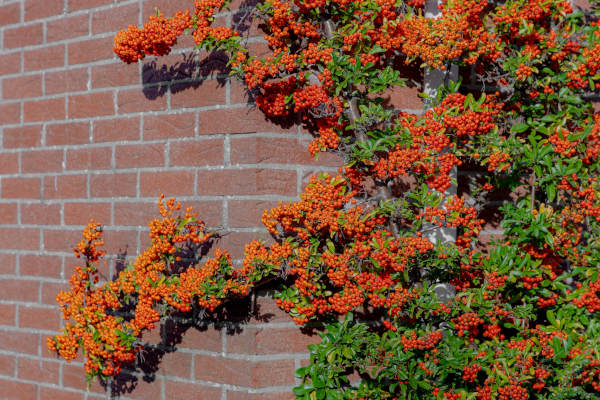How to grow Pyracantha
A genus of seven species of predominantly thorny, evergreen shrubs which are native to Europe and Asia. Plants have, however, naturalised widely beyond their original range as they are adaptable and robust, hardy or fully hardy shrubs.
Pyracanthas are often planted as hedges due to the impenetrable barrier they create, and plants produce pretty white flowers in summer, followed by bright, colourful red, yellow or orange berries in autumn and winter. Fruit is a fantastic food source for birds and pollinators adore the clusters of flowers too.
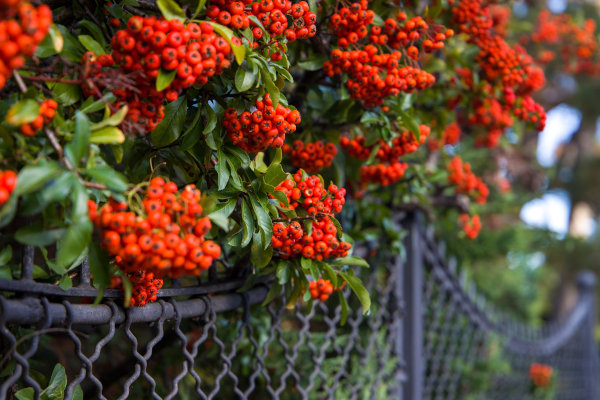
Zantedeschia is a genus of flowering plants from the family Araceae and is native to southern Africa. With a rich history dating back to the Ancient Romans, these deciduous or semi-evergreen perennials have been used as a symbol of celebration. Zantedeschia was Named after Professor Giovanni Zantedeschia, an Italian botanist.
There are two main forms of Zantedeschia: hardy and tender. Hardy forms of the plant can be grown outdoors, enjoy moist soil and full sun or partially shaded conditions - these are known as Arum lilies. Tender forms of Zantedeschia prefer being grown in containers or pots and should be brought inside over the winter - these are known as Calla lilies.
With tuberous flora in all colours from whites, yellows and oranges to deep reds and purples, Zantedeschias are not to be overlooked in any garden, as long as they have sufficient sunlight to grow in.
Ready to learn more about growing Zantedeschia? Read on for all there is to know...

Key Information
Soil pH
Position
Hardiness

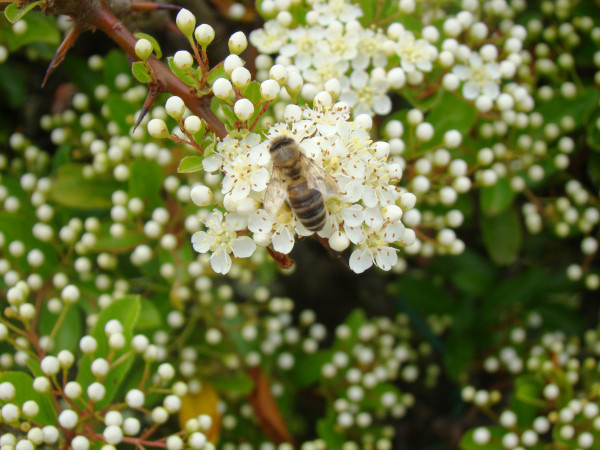
Where & when to plant Pyracantha
Position - Full sun or partial shade of any aspect.
Soil - Happy in any soil which is moist yet well-drained. Drought tolerant once established.
Flowering Period - Late spring to summer, depending on variety
Hardiness - A hardy (H6) to fully hardy (H7) evergreen shrub.
A climbing shrub which can easily be trained against a wall or fence and, with minimal early support, will intertwine with itself to create a self-supporting, dense thicket. Suitable for any moderately fertile soil, pyracantha likes a spot in sun or partial shade and can cope with dry, free-draining soils as well as heavy clay (providing soil does not become waterlogged). Upright plants can reach between 3 and 4 metres in height and spread, although shorter and smaller varieties are available, and plants respond well to pruning too. For ease, pick one which has roughly the height and spread you need as pruning often needs a thick pair of gloves!
Best planted in autumn or winter, although plants are generally robust enough to be planted anytime with proper after care. Choose a site with moderately fertile soil in full sun or partial shade – happy in free draining soils once established, as well as heavy clay providing it does not become waterlogged. If grown in shade, then the number of blooms and berries may be reduced.
How to plant Pyracantha
Pyracantha are versatile enough for growing in containers, as a hedge, as a specimen plant or trained against a wall or fence.
- For planting in containers, first choose an appropriately sized pot and ensure that you do not swamp your plant by choosing too large a container.
- If you are using a large or heavy pot, it can be a good idea to fill and plant it in situ to save yourself the trouble of moving once full.
- Use a good quality all-purpose compost, and, if not already present in the compost (check the description on the bag) some suitable slow-release fertiliser granules.
- Start by partially filling the pot with compost; enough so that when placed on it the upper surface of the root ball is about 3cm lower than the top of the pot.
- Infill all the space surrounding the root ball with compost, firming down with your fingers then adding a little more so the plant is held tight.
- Pick up the container and lightly tap on the potting bench or ground a few times to help further settle the compost around the plant.
- Water well to both settle the soil and give the plant a good drink.
- A mulch with horticultural grit will look attractive and help to prevent a ‘cap’ or crust forming on the top of the compost (something container plants can suffer due to the artificial nature of their watering).
- For planting in the garden, dig the soil area removing any large stones and weeds and breaking up any lumps. Dig in some organic matter such as manure or garden compost. If your soil is heavy clay, now is also the time to add a generous helping of horticultural grit.
- Rake level and firm with your heels. Rake level again.
- Water plants well and allow to drain before planting. A good tip is to dig a hole twice the size of the root-ball. Fill with water and allow to drain before placing in the plant.
- Place the plant in the hole, ensuring the top of the root ball sits level with the surface of the soil. Too low and the plant may rot, too high and the roots can dry out.
- Backfill with soil and firm in gently with your foot.
- Soak well with water.
- If planting as a hedge be sure to allow around 50cm between each individual plant.
- If training against a wall/fence be sure to plant away from the structure a little to allow rainwater to reach and to avoid the dry soil at the base.
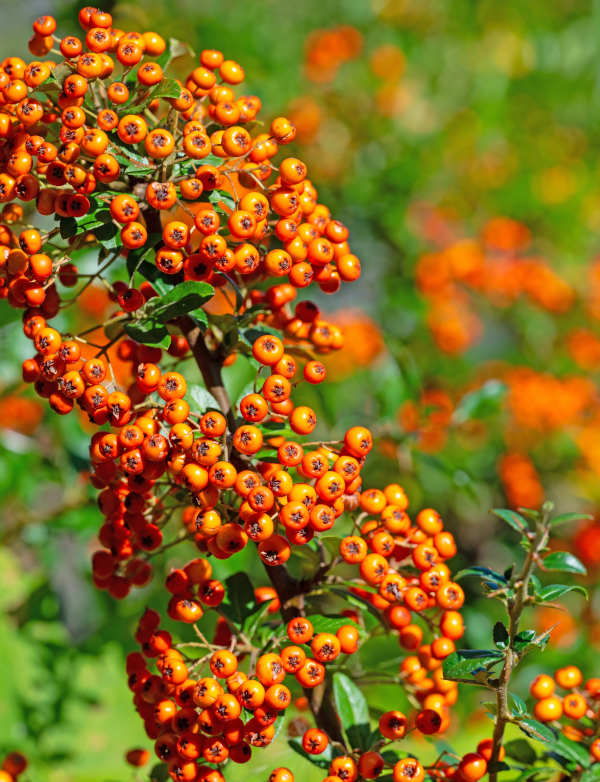
What to plant with Pyracantha
These plants are beautiful in their own right and versatile enough to thrive almost anywhere. They combine well with other evergreens such as photinia and holly – adding bushy, gap filling interest in the border or creating height and volume to lead the eye around your planted spaces. Equally, the shade provided makes them ideal for underplanting with spring bulbs, vinca (periwinkle) or hellebores.
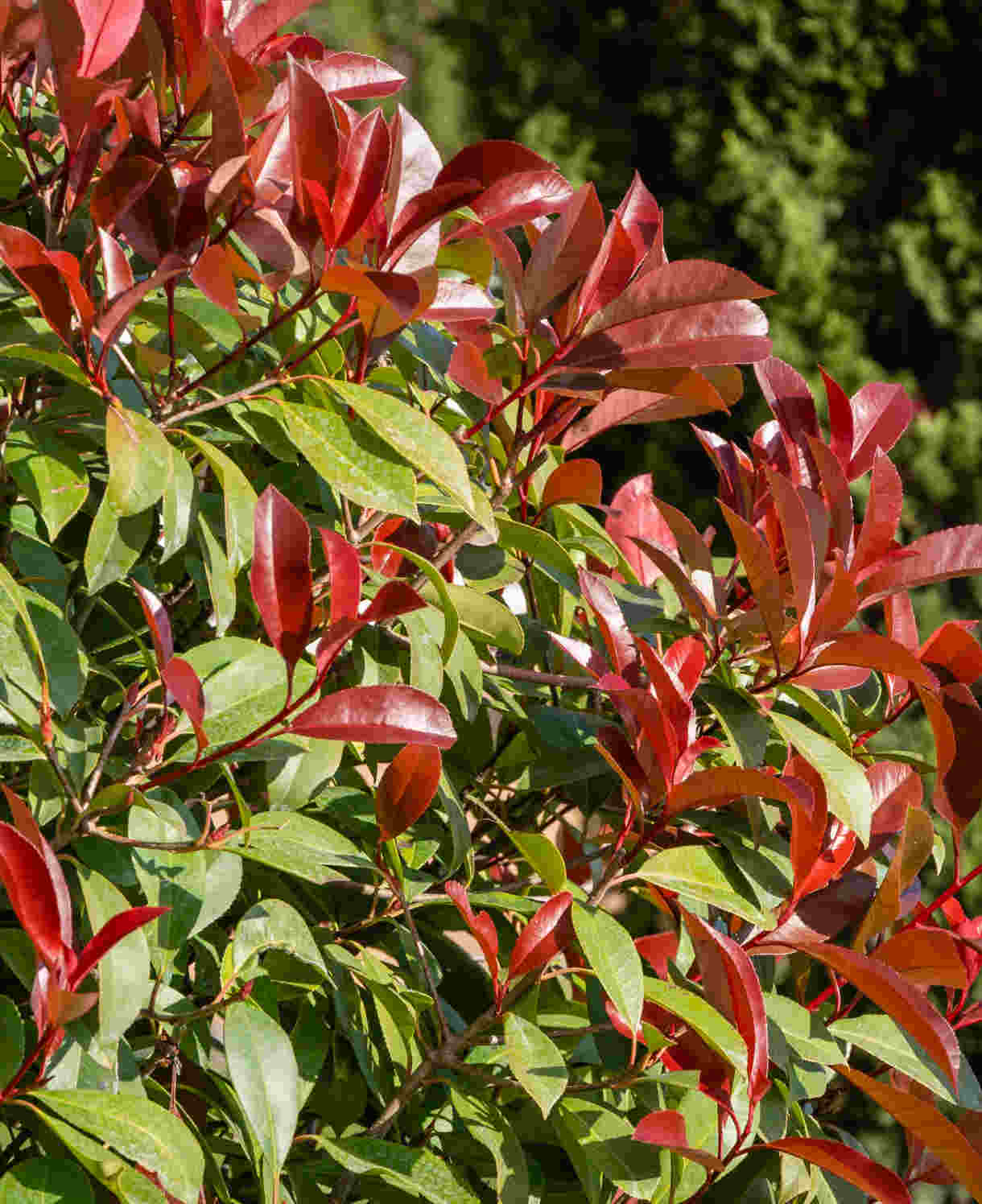

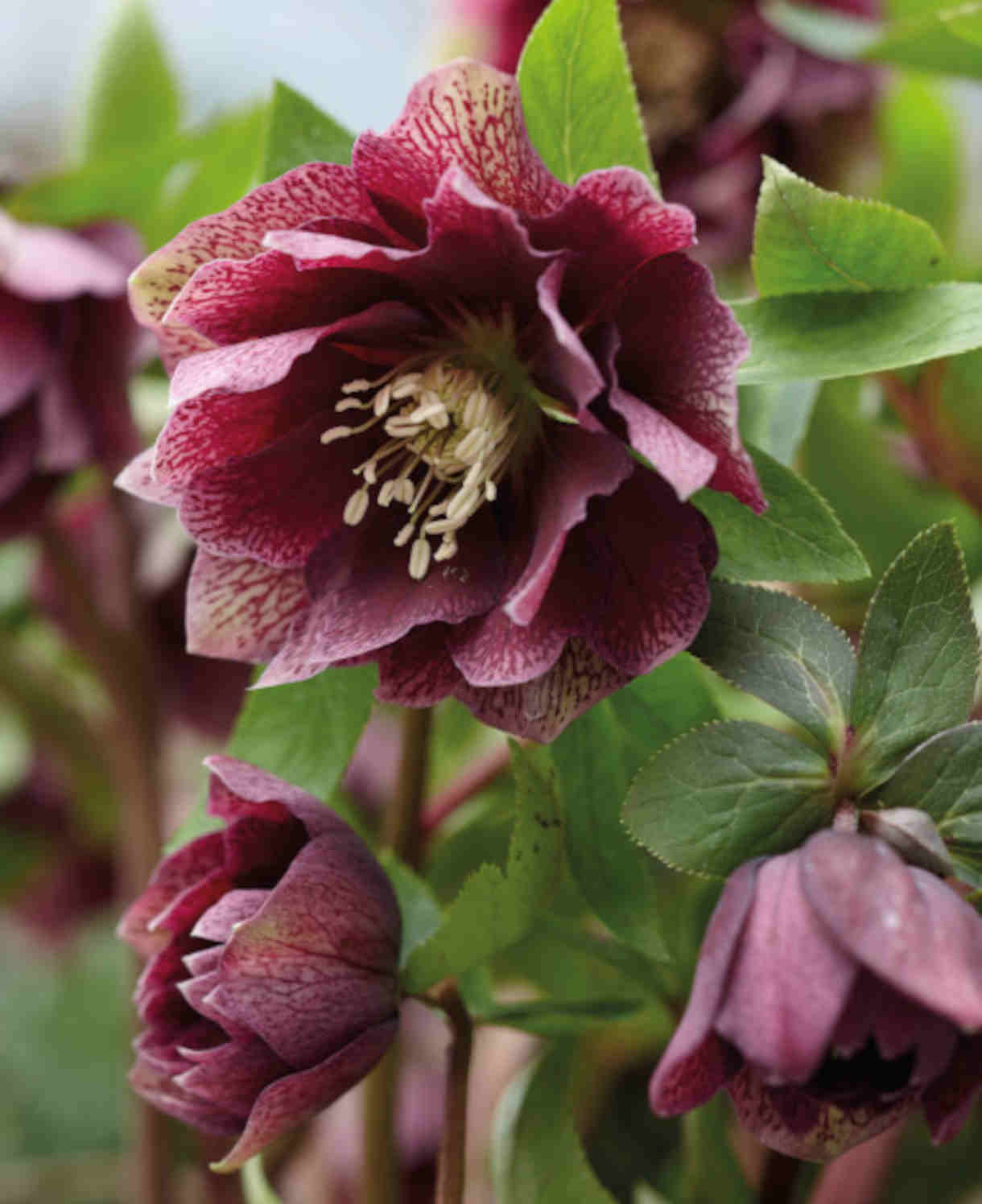
How to care for Pyracantha
Pruning and Training
Pyracantha produces flowers (and berries) on the previous year’s growth so when you prune bear this in mind and retain as much of the old wood as possible so as not to sacrifice the blooms. Be sure to wear good, thick gloves when pruning – or use long handled secateurs - as the thorns of most pyracantha are long and very sharp!
Free-standing shrubs
Simply remove unwanted, damaged or diseased shoots to shape as required in mid-spring.
Wall-training shrubs
As a rule of thumb; prune to make the berries more visible and to keep the plants in shape. In spring, cut back outward-growing shoots, and shorten other growth as needed. Waiting until after flowering will help to limit loss berries later in the year.
In late summer, shorten all sideshoots that arise from the main framework branches, stopping just short of the clusters of berries (usually about two to three leaves from the base of the side shoot). If you want to extend the plants then tie new, leafy shoots into wires or trellis. If wanting to train over doors, windows or arches do this while the shoots are still flexible enough an at semi-hardwood stage.
Hedges
Trim Pyracantha hedges two or three times between spring and the end of summer. Aim to retain as many berries as possible whilst shaping as needed.
Watering
Water your new plant regularly for at least the first two years. Once established, it should cope well without extra watering, except in particularly hot, dry spells. Bear in mind if your Pyracanths is trained as a wall shrub, it may need regular watering, every week to 10 days, if rainfall does not quite reach it due to overhang.
Feeding
Pyracantha will benefit from the application of a general-purpose fertiliser in late winter at the rate recommended on the packet. Follow this with a thick mulch of well-rotted organic matter ready for a growth spurt in the spring.
Pests and Diseases
Pyracantha can be susceptible to pyracantha scab, fire blight, pyracantha leaf mining moth and woolly aphids. Keeping plants in tip-top condition will go a long way to prevent these.
Another common issue can be lack of berries, this is usually due to:
- Too much pruning whereby the berry bearing growth has been removed.
- Poor pollination due to a cold spring or excessive wet weather which results in inactive pollinators such as bees.
- Drought, particularly if planted in a dry border or against a sunny wall. Plants will drop berries if stressed by drought, even if flowers were successfully pollinated. Water every 10 days during dry conditions – continuing until berries colour up in late summer.
- Insufficient nutrients. Potash, or potassium, will encourage flowers and fruit so if you find you have a lack of berries apply sulphate of potash, tomato fertiliser or comfrey pellets in early spring. Spread to around 1m beyond the spread of your pyracantha for best results.
- Frost – late spring frosts may damage the flowers and destroy the plant’s berry production for that year.
How to propagate Pyracantha
This is best done by semi-ripe or hardwood cuttings. Pyracantha can also be propagated from seed, but the process requires 3 months of cold stratification in order for germination to occur and cultivars don’t normally come true from seed.
Semi-ripe cuttings are straightforward way to propagate a wide range of shrubs and trees – especially evergreens – without the need of special equipment or skills.
- Select the cuttings from this season’s growth and remove them using sharp secateurs (remember to wear gloves).
- Place the cuttings in a plastic bag straight away. Keep the bag in the shade and aim to pot the cuttings within 12 hours.
- Prepare the cuttings by trimming them to 10-15cm long, cutting just below a leaf node. Next, remove the lowest leaves and the soft tips. There will be about four leaves remaining.
- Dip the bottom of the cutting in fresh hormone rooting powder, ensuring that the cut is well covered. Tap to remove any excess.
- Insert the cuttings around the edge of a suitably sized containers allowing some space between each and use filled with cuttings use 50 per cent free-draining potting compost mixed with 50 per cent sharp sand or perlite. Water well and allow to drain.
- Place the container of cuttings in a greenhouse. Alternatively, cover pots with a plastic bag and put in a warm, light position, out of direct sunlight.
- Remember to remove any excess moisture to prevent rot but keep the compost damp. Cuttings taken in summer seldom need bottom heat but by autumn cuttings will root more quickly in a heated propagator.
- Transfer to separate pots once a good root structure has been achieved for each cutting and grow on as for young plants.
*Many plants carry Plant Breeders Rights and cannot be propagated for commercial purposes.
Common Pyracantha questions
How fast does pyracantha grow?
If provided with optimum growing conditions plants can grow by 30 to 50cm per annum until they reach maturity – this takes 10-20 year.
Does pyracantha need a trellis?
If you are growing your pyracantha against a wall or fence, then it will need some form of support. Trellis is fine but so is a system of wires (see Gripple system or similar) to which you can secure stems.
Does pyracantha need lots of water?
Whilst your pyracantha is establishing a good root structure, we recommend you water it regularly during dry spells. Once it has established (over 1-2 years) plants are drought tolerant and should only need water during exceptionally dry spells. Remember though, if you grow your pyracantha in a container, it will more dependent upon you for water and nutrients than if planted in the ground.
